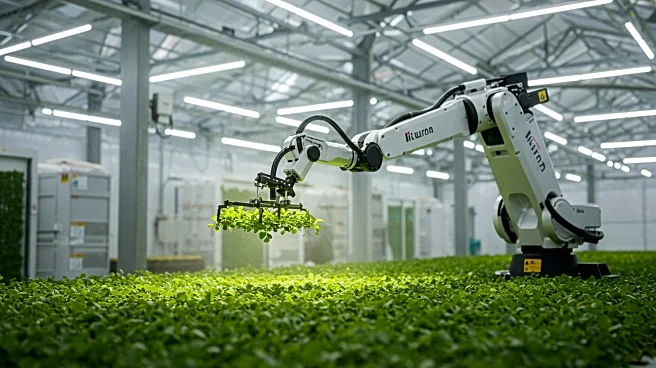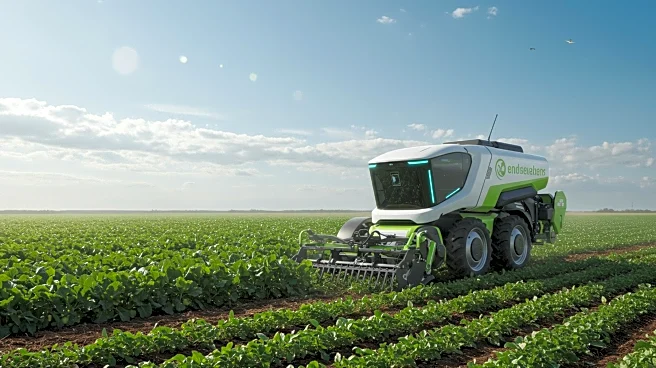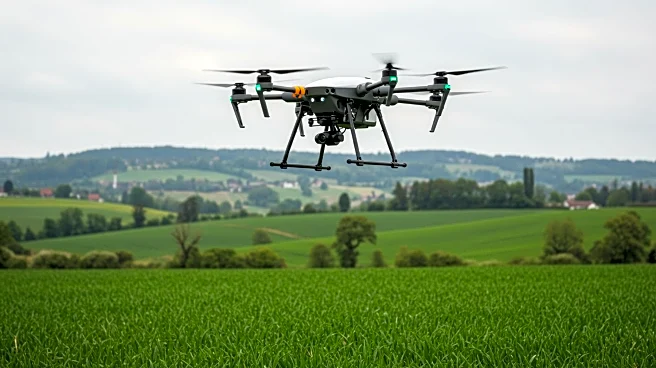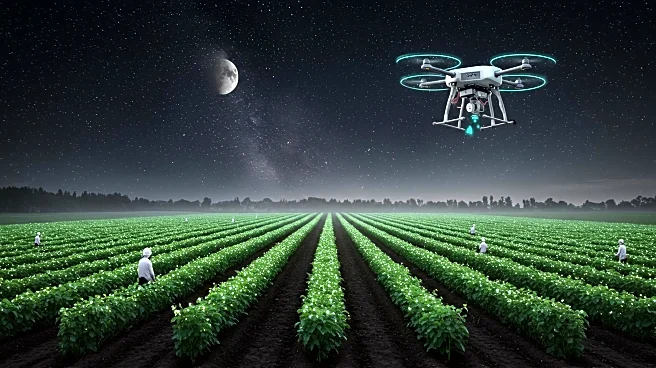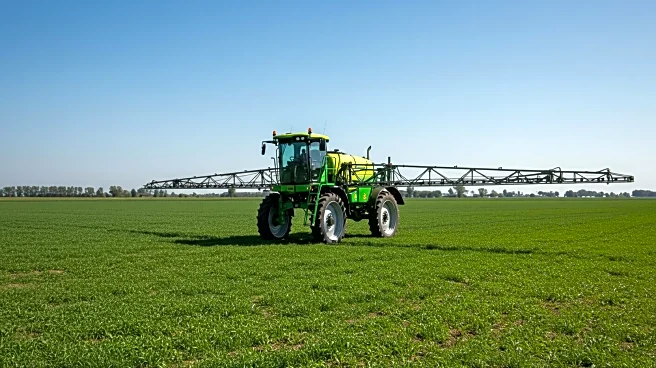What is the story about?
What's Happening?
The Department of Agriculture is increasingly focusing on the integration of automation and robotics in farming to address challenges such as labor shortages and climate change. The use of agricultural robots is becoming essential for tasks like planting, harvesting, and weeding, which supports sustainable farming practices. These technologies, including GPS-guided machinery and smart sensors, are transforming agriculture by enabling precision farming. This involves using data-driven tools to optimize planting, spraying, and soil management, thereby increasing efficiency and reducing environmental impact. The shift towards automation is gradual, with some farmers adopting a few connected tools while others fully embrace automation and fleet management.
Why It's Important?
The adoption of automation and robotics in agriculture is crucial for meeting the growing global food demand, projected to increase by 70% by 2050. These technologies help mitigate labor shortages and enhance productivity, making farming more resilient and environmentally responsible. By reducing waste and lowering costs, automation supports sustainable practices and improves profitability for farmers. Large farms, in particular, benefit from economies of scale, seeing faster returns on investment. The use of robotics also reduces human error, ensuring consistent output and higher yields. This technological shift is expected to significantly impact the agricultural sector, with the market for agricultural robotics projected to grow substantially.
What's Next?
As the agricultural sector continues to embrace automation, further advancements in robotics and AI are anticipated. These technologies will likely become more accessible and affordable, enabling wider adoption across farms of all sizes. The ongoing development of smart farming tools will enhance precision agriculture, allowing for more efficient resource use and better adaptation to changing environmental conditions. Additionally, the integration of robotics in agriculture is expected to drive policy discussions on sustainable farming practices and the future of food security. Stakeholders, including policymakers, industry leaders, and farmers, will need to collaborate to address challenges related to technology adoption and digital access in rural areas.
Beyond the Headlines
The shift towards automation in agriculture raises important ethical and cultural considerations. The reliance on technology may lead to concerns about job displacement and the need for workforce retraining. Additionally, the digital divide in rural areas could hinder the widespread adoption of these technologies, necessitating efforts to improve digital infrastructure and access. The environmental benefits of precision agriculture, such as reduced chemical use and improved soil health, highlight the potential for robotics to contribute to sustainable development goals. As the industry evolves, balancing technological innovation with social and environmental responsibility will be key to ensuring a sustainable future for agriculture.
AI Generated Content
Do you find this article useful?
